Iphone spacegrey complete
Top sales list iphone spacegrey complete
Latest Offers

Pakistan (All cities)
As one of the largest Chinese manufacturers of industrial valves, China Vervo Valve Co., Ltd. offers a wide array of products, including floating ball valves, trunnion ball valves, cast steel gate valves, forged steel gate valves, pressure seal gate valves, cast steel globe valves, forged steel globe valves, cryogenic globe valves, forged steel check valves, swing check valves, dual plate check valves, API 609 butterfly valves, steel plug valves, Y strainers, and more. Our business reaches North America, South America, Europe, Asia, the Middle East, Africa, and Oceania. We manufacture, import, and sell a wide range of industrial valves, including ball, gate, globe, butterfly, check, plug valves, and specialty valve solutions. We look forward to establishing a strong cooperation with you! Visit our website: https://www.vervovalve.com/
Rs 200,0
See product
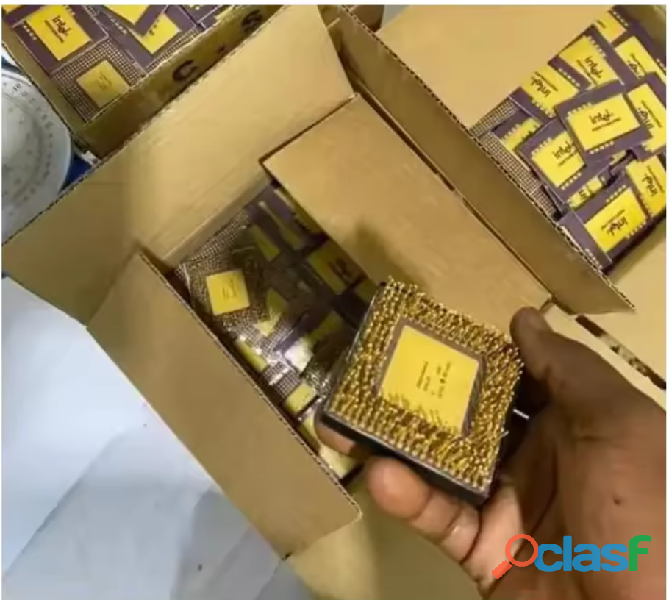
Pakistan (All cities)
We are specialized in the sales of full metal scrap/ recycling material such as ac/fridge compressor , Ceramic Cpu Gold Processor Scraps , H.M.S 1&2, Copper wire scrap,Drained Battery Lead scrap in the UK (LONDON).We have all our product fully ready for sales in good quantity and quality also to be shipped out for our buyers.For Booking : https://wa.link/og0sgp Whatsapp: +15806151130
Rs 1.000,0
See product
2 photos
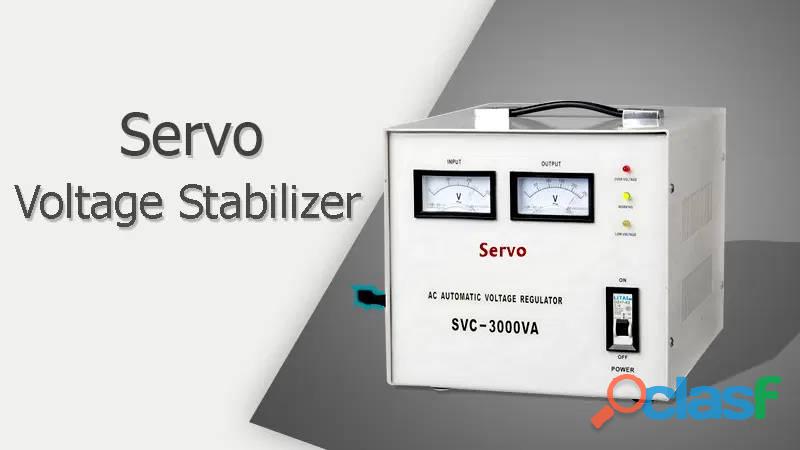
Pakistan (All cities)
Protect your valuable machinery and equipment from voltage fluctuations with our reliable servo voltage stabilizer. Designed to maintain a consistent and stable voltage supply, it ensures optimal performance and extends the lifespan of your devices. Ideal for both industrial and commercial applications, our stabilizer provides superior protection against power surges, ensuring your machines run smoothly and efficiently. Trust our advanced technology for enhanced safety and reliability in every operation. https://voltsine.in/product/servo-voltage-stabilizer/
Free
See product

Pakistan (All cities)
Spark your child’s learning journey with Kinder ABC! From fun alphabet adventures to interactive games like tracing, puzzles, and bubble popping, Kinder ABC offers an ad-free, safe space for kids to learn letters, phonics, and more. Download now and make learning fun! Get Kinder ABC on Play Store: https://play.google.com/store/apps/details?id=com.icommunetech.kinderabc Official Website: https://www.icommunetech.com/
Free
See product
3 photos

Pakistan
Kennel Club Assured Breeder. Jimjen George Gently is a proven sire, (daughter & son Crufts qualified), and health tested, for MLS, NCCD, FVll, & IGS, and available at stud, to approved bitches,at small show kennel in Suffolk. 'Reach....Bonnie is a friendly and loving dog who loves attention and is very outgoing. He has been with us since he was 8 months old, but unfortunately he has been fighting with my male cat which causes him stress and anxiety being around the house.....Our amazing litter was born on 18th of December mum is stunning tri colour and dad is a lemon and white tri both pedigrees dad has five generations blood line with his papers to prove. We have a litter of 9 chunky playful pups all wormed and....
Rs 200,0
See product

Pakistan (All cities)
Trusted Fence Installation Company in Maryland & Delaware. Explore wood, vinyl, and aluminum fencing solutions for homes and businesses. Call for a free estimate today https://www.fenceanddeckconnection.com/fencing/
Free
See product
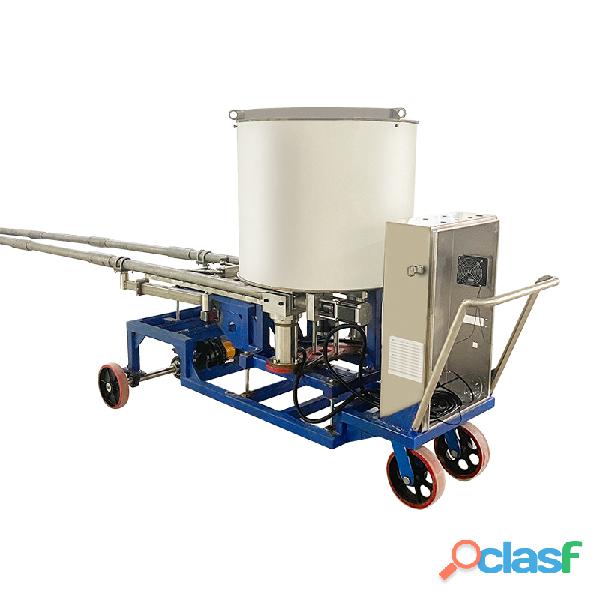
Pakistan (All cities)
Overview MAC-G320 automatic mold flux feeding system is a new generation product of automatic adding mold flux, which is independently developed by Wuhan CenterRise M&C Engineering Co., Ltd. According to different steel grades, casting speed, vibration and other process parameters, then the system can analyze and calculate the accurate mold flux addition amount through intelligent software. Then the system sends out signals to control the mold flux addition process and mold flux addition amount, and designs appropriate nozzles and propellers according to the fluidity of molten steel in the mold and the ductility of mold flux. After the system setting is completed, there is no manual intervention is required. It completely replaces the whole process of manual addition of mold flux, and realizes the automation of mold flux addition. The features of the system 1. The system automatically controls the amount, process and time of adding mold flux according to the process requirements of automatic mold flux addition, so as to maintain the physical state of the mold flux and prevent it from being broken. 2. The user can match different parameters according to actual needs, so as to change the length of the mold flux feeding time and the amount of mold flux, which can suit for the use of different segments and different casting speeds. 3. The casting speed signal is used and the amount of adding mold flux can be automatically adjusted according to the casting speed. The mold flux can be added timely and evenly, which can improve the quality of the billet and reduce labor intensity. 4. The time is controlled by PLC, no manual intervention is required. The adjustment is very convenient. It has manual, automatic, local and remote control modes. 5. The system has reliable performance and simple structure, and can be adapted to powder and granular mold flux. 6. It has a special anti-blocking nozzle and backflushing design to overcome the phenomenon of pipeline blockage. 7. Strong operability, simple and convenient maintenance, and low maintenance cost. 8. It can maintain the even distribution of the flux layer in the mold. The composition of the system The system consists of feeding trolley, feeding bucket, swing arm and feeder motor, swing arm transmission device, PLC and control equipment. 1. The feeding trolley is the support and walking equipment of the mold flux feeder. The basic equipment of the adding mold flux machine is installed on the feeding trolley. At the same time, the trolley can easily make the mold flux feeder walk to the working position or the parking position. 2. The feeding bucket is a device for holding mold flux. The mold flux is pre-filled in the feeding bucket and is evenly output through the feeder. The feeding bucket is provided with alarm contact of mold flux level limit.. 3. The swing arm and the feeder motor form a feeding and conveying device. The mold flux is evenly transmitted to the feed opening at the front end of the swing arm through the screw distributing device controlled by the motor. Then the mold flux can be used for mold distribution. 4. PLC and control equipment adjust and control the mold flux feeding speed, operation mode and control mode of the mold flux feeding machine, and realize various control modes and rates. 5. The swing arm transmission device controls the reciprocating motion of the swing arm according to the size of different molds, so that the mold flux is evenly distributed in the mold. The technical parameter Mold width: 500-2000mm Mold thickness: 100-500mm Type: screw conveying type mold flux feeding machine Heating method: stirring electric heating Arrangement location: on the pouring platform (with its own wheels to move) Adding capacity: 0.5~7.5L/min, continuously adjustable feeding tube Molding flux storage tank: 300 L, with material level detection and alarm Control mode: local/remote control, automatic /manual mode Molding flux type: granular flux or powder flux flux adding method: spiral swing adding flux Casting speed interlock: yes Mould size setting: yes Signal transmission: DP/Industrial Ethernet
Rs 0,0
See product
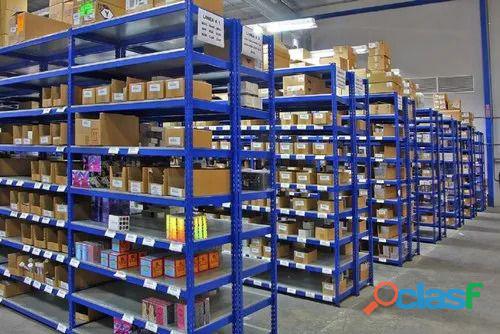
Bagh (Azad Kashmir)
Eagle Racking India is a leading provider of industrial storage racks in Kanpur, offering high-quality and durable storage solutions for warehouses, factories, and commercial facilities. Our storage racks are designed to maximize space utilization, enhance efficiency, and ensure easy inventory management. We specialize in a wide range of industrial racking systems, including pallet racks, heavy-duty racks, mezzanine racks, and cantilever racks, catering to diverse storage needs. Made from premium-grade steel, our racks are built to withstand heavy loads and provide long-lasting performance. They are designed with customizable shelving options, corrosion-resistant coatings, and high load-bearing capacities to meet industrial requirements Read more: https://eagleracking.com/kanpur/industrial-storage-rack
Rs 0,0
See product
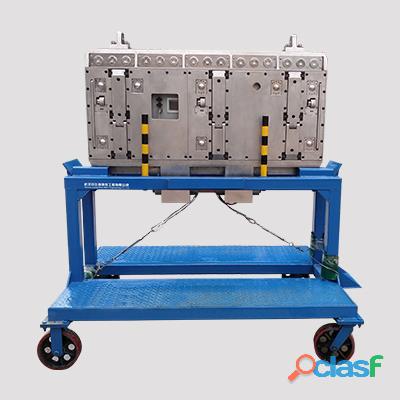
Pakistan (All cities)
Overview In order to ensure the quality of the slab, it is necessary to strictly control the performance and various parameters of the CCM’s guide roll within a certain error range. Due to the continuous casting machine (CCM) is large and in a harsh production environment, it is difficult to measure the performance of the continuous casting machine manually, and many parameters are difficult to measure. Therefore, it is very important to have a set of equipment that can simulate drawing of steel billet to realize the measurement of CCM’s various parameters and performance. The multifunctional strand condition monitor uses various sensors to realize the measurement of CCM’s roll gap value, the arc value of continuous casting section, the rotation quality of the rolls, and the water spray pressure under the condition of simulating drawing of steel billet. Therefore, the CCM’s quality can be controlled in real time, and it is convenient for the maintenance personnel to analyze the CCM’s measurement results. The problem areas of the casting machine equipment can also be found. If these problems doesn’t be found in time, it will cause the bad quality of CCM’s products, the steel breakout in pouring process, surface and internal cracks and centerline deviation. The measurement of the strand condition monitor Roll gap value: By measuring the distance between a series of inner arc guide rolls and outer arc guide rolls on the CCM’s roller bed. It can be used to set the correct roll gap spacing for each pair of guide rolls in the slab caster. Arc condition of guide roller : Measuring the position between the position of the CCM’s outer arc guide roll and the two adjacent guide rolls and then measuring the deviation compared with the origical position of CCM’s guide roll, we can obtain the arc condition of the outer arc guided roller. Guided roller rotation: It is possible to know whether each guided roller can rotate freely by measuring. Water spray pressure: The operation of the water spray cooling system can be judged by measuring the situation of secondary cooling water spray at different positions of CCM's width direction. Then we can accurately locate whether the water spray at a certain point is normal. The main components of the strand condition monitor 1. The main body of the strand condition monitor used to measure the continuous casting sector 2. The connecting chain between strand condition monitor and dummy bar 3. The storage rack chain of strand condition monitor 4. Battery charger: 24V 5A 5. Calibration equipment 6. Remote control 7. Laptop 8. Printer 9. Data communication cable The technical parameter 1. The measurement range of roll gap: 210mm, 230mm (can be customized according to requirements) 2. The measurement accuracy of roll gap: 0.01mm 3. The arc measurement range: ±80° 4. The arc measurement accuracy: 0.01° 5. The spray measurement range: 0-10 6. The spray measurement accuracy: ±1 7. The battery usage times: 3 times
Rs 0,0
See product

Pakistan (All cities)
Overview The taper of the narrow face of the mold has an important influence on the quality of the casting billet. Excessive taper will cause the mold to squeeze the billet shell, and a small taper will increase the air gap. With the continuous increase of the requirements of the casting billets’ quality and the continuous introduction of high-precision molds, the current taper measuring instrument in the domestic market generally have low measurement accuracy and complex measurement methods, which restrict production development. The new-generation taper measuring instrument developed by Wuhan CenterRise M&C Engineering Co., Ltd. adopts imported high-precision inclination sensor, combined with ultra-low power consumption processor, which can quickly and accurately measure the actual taper value of the narrow copper plate of the mold. The instrument is fully functional, easy to use and suitable for slab molds of various lengths. Most of the current slab molds are single-taper, a narrow flat copper plate. The taper value required for production can be achieved by adjusting the angle between the narrow copper plate and the direction of gravity. The taper measuring instrument directly measures the angle between the narrow copper plate and the direction of gravity. According to habits and production needs, the angle is converted into the value of one-sided shrinkage of the upper and lower ports. The main features 1. Easy to calibrate, stable performance, easy to operate 2. Self-supporting, self-aligning, self-balancing 3. High measurement accuracy 4. LCD data reading 5. Fast response, real-time display reading 6. Adjustment of dynamic intelligent system 7. Lithium battery power supply, suitable for on-site use of mobile operations 8. The continuous measurement time is more than 36 hours 9. The sensor adopts multiple protections to meet the needs of on-site harsh environment measurement 10. The weight of the whole system is less than 3.8 kg, and it is equipped with a set of zero-point calibration table, which is convenient for on-site installation and measurement 11. Applicable to various arc, parabolic and straight molds The performance and index 1. Measuring range: -3°~ +3° (measurement length can be customized according to users’ needs) 2. Measurement accuracy: 0.01mm 3. Temperature range: -25℃~+85℃ 4. Linearity deviation: -0.03mm ~ + 0.03 mm 5. The longest usage time after fully charged: 36 hours 6. The longest storage time after fully charged: 2 months The main components 1. Measuring instrument: central measurement and control unit, measuring sensor 2. Measuring stand 3. Standard table: standard surface, support frame, spirit level
Rs 0,0
See product

Pakistan
4 year old male beagle called 'Bizol' who is very sweet a little shy but once settled is very loving and friendly. He is great with other cats and dogs, he would be fine to be rehomed with older children purely as he's a little shy, He is cur....
Rs 200,0
See product

Pakistan (All cities)
" Elevate Your Skin's Radiance at Kameleon Salon Your Premier Skincare Destination in Kokapet. Experience Tailored Treatments, Expert Care, and Revitalizing Solutions for Your Glow" https://www.kameleonsalon.com/skin-services.html
Rs 0,0
See product

Pakistan (All cities)
ISO Certification in Kuwait is essential for businesses aiming to improve their credibility, efficiency, and market competitiveness. Achieving ISO Certification in Kuwait offers a standardized management system that supports organizations streamline processes, improve product quality, and ensure customer satisfaction. Additionally, ISO Certification in Kuwait demonstrates a commitment to international best practices, which is crucial in a globalized market. For businesses looking to expand internationally, ISO Certification in Kuwait is a significant advantage, as many clients and countries prefer or require ISO-certified partners. In Kuwait’s growing economy, ISO Certification in Kuwait serves as a key differentiator, fostering trust and reliability among clients and stakeholders. Quality Sistema Certifications & Inspections Pvt. Ltd. is one of the leading Global Organization, providing ISO Certifications, Inspection, Assurance & Auditing Services for industries with competence and transparency to build trust across the global industries. We are a team of highly specialized experts and industry professionals who working towards a sustainable business growth. #ISO 9001 Certification KuwaiT,#ISO Certification in Kuwait #iso 9001,ISO 9001 Certification Kuwait
Free
See product

Pakistan (All cities)
Artificial Hymen Pills Price in Pakistan What is Artificial Hymen Pills? Artificial Hymen Pills in Pakistan an Artificial Hymen Could Be a Cellulose Compound That is Developed in 2010 in Germany in a Very Laboratory for Microbiology Stuffed With Synthetic Blood That Imitates Human Blood. Artificial Hymen Pills Are Useful for Fake Virginity by Creating a True Hymen. And Imitate the Loss of Blood That Happens on Your First Time. These Pills Are Formulated With 99.9% Natural Ingredients That Are Extracted From Pure Herbs Used for Hundreds of Years in Asia. Of These Ingredients Are Completely Body-safe and Do Not Have Any Side Effects Whatsoever. All You’ve Got to Try is Just Place the Artificial Pills in Pakistan Inside Your Vagina Between 25-30 Minutes Before You Derive Pleasure From Sexual Activity. Artificial Pills Newtelebrands.com the Natural Hymen of a Lady Protects the Vaginal and Its Canal. If You’ve Lost Your Hymen Due to Any Physical Activity. And You’re Worried About Your Dark That You Simply Cannot Bleed at That Point. So Stop Worrying Because There’s a Product That Comes Dead Set Reduce Your Worries, and Provides You Your Virginity Back by Using Pills. These Artificial Hymen Fake Blood Pills Will Influence the Body Heat and Vaginal Moisture and It Will Then Create a Synthetic Membrane That Acts Sort of a Hymen and Tightens the Vaginal Opening. After Successful Penetration of the Male Organ, the Fake Membrane Will Tear Similar to a True Hymen and Discharge a Touch Blood-like Liquid to Finish the Dramatic Effect. How Artificial Hymen Pills Work? Artificial Hymen Pills in Pakistan Usually Fake Virginity, an Artificial Hymen is a Prosthetic Invention for the Aim of Simulating an Intact Hymen in Women. These Pills Contain a Natural Blend. Which After Inserting in the Vagina Properly Temporarily. Giving the Looks of an Intact Hymen and Releasing a Red Liquid That Appears Like Blood When Subjected to Pressure. Artificial Hymen Kit Consists of Two Layers of Cellulose, the Blood Liquid, and Powder. The Factitious Hymen Reacts to Heat and Moisture That is Present Within the Interior of the Vagina. Thus, the Unreal Hymen/hymen Dissolves Inside the Vagina and Exit as a Blood Trail to Substantiate the Virginity. It Has Been Specifically Designed to Offer You the Chance to Introduce One a Minimum of 2 Hours and Half-hour Before Sexual Activity. Make It Easy With the Included Disposable Plastic Tweezers a Finger Deep. During Sexual Activity, It Dissolves Then Completely. And by the Interior Friction of the Penis, the Cellulose Compounds Mix With the Body Fluids. Hymen Flows Down From the Vagina After Sexual Intercourse. Artificial Hymen Pills in Pakistan This Residue is Seen on the Penis and Sheets That Bring the Result to Substantiate Your Virginity at the Specified Moment. The Utilization of Hymen Gel Also Works With the Employment of Condoms. How To Use? Artificial Pills Just Finger Deep and About 1-3 Hours Before the Planned Sexual Activity. The Capsules Contained Fake Blood Therein Which Then Completely Dissolved. During Gender, It Mixes Along With Your Vaginal Secretions and Runs as a Trace of Blood During a Natural Amount. By Tightening the Vaginal Entrance, It Intensifies the Sensation of Virginity. Use It Half-hour – 2 Hours Before the Planned Sexual Issues and Also Confirms Reliably Your Virginity by Artificial Hymen Pills in Pakistan. With Original Blood, Pills Turns Blood Red Together With Moisture and Dissolves Completely. Use 25-30 Minutes Before Sexual Intercourse: Wash Your Hands and Vagina Before Using. Slightly Insert the Synthetic Hymen Into the Vagina. It Will Dissolve Within 20-30 Minutes After Using It. Benefits of Artificial Hymen Pills? Artificial Pills Will Facilitate Your Desire for a Virgin Again Without Undergoing Vaginal Rejuvenation Surgery or Popping Any Dangerous Pills. They Will Facilitate the Reboot of Your Virginity and Feel Young Again. Artificial Pills in Pakistan Facilitates You to Restore Your Hymen to Their Original Position. And Facilitate Your Experience of Sex Sort of a Virgin. The Factitious Hymens Are the Product of Natural Material. Like Synthetic Blood and Cellulose, is Safe for Your Vaginal Health. Lady Secret Cream the Following Are Advantages of Pills Make the Vaginal Path Tighter Make You Bleed at Your Night It Has No Side Effects. It is Non-toxic and Safe No Painful Surgery, Needles, or Anesthesia From Now on Artificial Pills in Pakistan Price Prevent From Doctor’s Visits and Medications You Do Not Need Any Hymenoplasty. It Appears Like the Original Blood 99.9% Harmless, Risk-free Call & Whats App 0300-0085742 | 0330-2828742 The Largest Online Shopping Website: NewTelebrands.Com
Free
See product
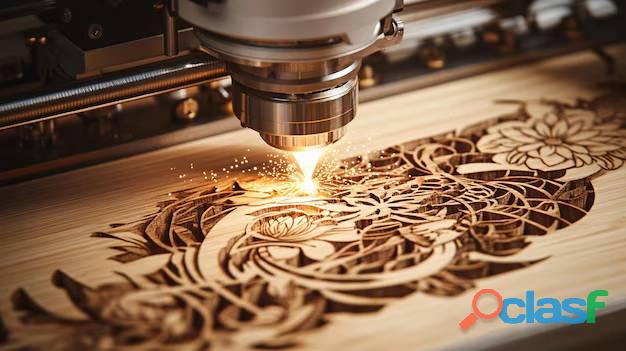
Pakistan (All cities)
Laser cutting machines have transformed the design and fabrication industries, unlocking a new realm of creative possibilities. With their ability to cut and engrave materials with precision and speed, these machines are not just tools—they are catalysts for innovation. Whether in architecture, fashion, art, or product design, laser cutters have become an essential tool for turning ideas into reality. https://www.tradebrio.com/exporters/laser-cutting-machines.html
Free
See product
